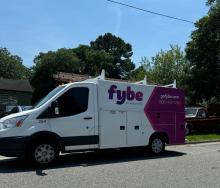
An increasing number of local governments around the country have started taking steps to improve broadband adoption and accessibility in their communities. A recent Brookings Institution article discusses the role of states in broadband deployment and adoption and how lawmakers are making efforts, but still have room for improvment.
Special Interest Lobbying Leaves an Imprint
A few states have explicitly banned municipal government from telecommunication services while others have confusing and hard-to-understand laws and regulations. Local governments have stepped up in the best interest of their residents but the imposed barriers have created tension between the local and state governments. Huge players influencing state legislation affecting broadband are the telecom lobbying interest groups. Due to their efforts, 19 states face barriers ranging from blocks to outright bans.
Brookings writes that states are a key factor in expanding high-quality Internet access to citizens and calls for a state-centered approach to improve the situation:
Instead of waiting for the stars to align in Washington, we should focus on states as an important middle ground. States have access to a range of tools and resources—independent of federal action—to promote broadband availability and adoption within their borders. The question is whether they will actually use them.
Specifically, Brookings recommends that states allow local communities to function with local telecommunications authority:
However, there is still more that states can do. Many should reconsider laws that block local efforts to expand broadband access, which limit opportunities to service populations that privately owned broadband networks will not.
The various barriers set up by the state governments may be hard to find but researchers at Pew Charitable Trusts have created the State Broadband Policy Explorer, a handy tool to make research easier. Using this tool, anyone from lawmakers to concerned citizens can search through specific categories or states and have a better understanding of barriers and supportive legislation. The tool is straightforward and easy to use; check it out.
We recently spoke with Kathryn de Wit during episode 372 of the Community Broadband Bits Podcast to get a more indepth look at what researchers at Pew discovered as they collected information for the tool. You can listen to the interview here:
More than Barriers
The FCC, defines "broadband" Internet access with speeds of at least 25 Mpbs download and 3 Mpbs upload. In their piece, the Brookings Institution notes that mobile Internet access is not a substitute for wired in-home connectivity, but a complement. They go on to show that states with the highest mobile-only subscription tend to have the lowest broadband adoption rates. Higher rates of in-home connectivity typically lead to higher rates of broadband adoption compared to states with higher mobile-only subscription.
Brookings also examined other factors not directly related to broadband adoption:
In understanding what drives different outcomes across states, we looked at four variables of interest: income, race, rural population, and education. Using regressions to analyze those variables, our team found results similar to many other researchers before us. States with higher median incomes, higher rates of education, fewer residents of color, and a smaller rural population share had higher overall broadband adoption rates. In terms of mobile-only subscriptions, the reverse is true. States with larger shares of Black residents and lower levels of education had higher rates of mobile-only services.
Researchers at Brookings recommend that considering these related factors can help states design policies tailored to improve broadband adoption through targeted approaches.
Stop the Preemptions
With all of these barriers, researchers at Brookings and local government leaders are recognizing that restrictive state laws can harm local broadband adoption and accessibility.







